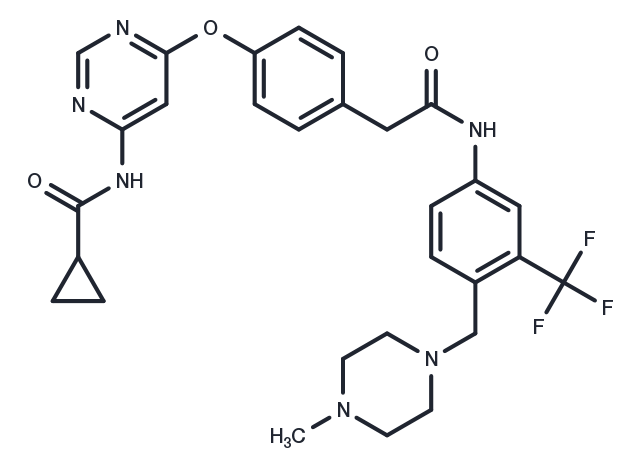Powder: -20°C for 3 years | In solvent: -80°C for 1 year


WS6, a β cell proliferation inducer, regulates Erb3 binding protein-1 (EBP1) and the IκB kinase pathway.

| Pack Size | Availability | Price/USD | Quantity |
|---|---|---|---|
| 1 mg | In stock | $ 30.00 | |
| 2 mg | In stock | $ 43.00 | |
| 5 mg | In stock | $ 66.00 | |
| 10 mg | In stock | $ 110.00 | |
| 25 mg | In stock | $ 222.00 | |
| 50 mg | In stock | $ 405.00 | |
| 100 mg | In stock | $ 510.00 | |
| 1 mL * 10 mM (in DMSO) | In stock | $ 84.00 |






| Description | WS6, a β cell proliferation inducer, regulates Erb3 binding protein-1 (EBP1) and the IκB kinase pathway. |
| Targets&IC50 | Proliferation (β cells):0.28 μM |
| In vitro | In the RIP-DTA mouse model with β-cell ablation, oral administration of WS6 (50 mg/kg) promotes β-cell proliferation, thereby ameliorating diabetes. |
| In vivo | In R7T1 cells (EC50=0.28 μM), WS6 induces cell proliferation through the action on the Erb3 binding protein-1 and IκB kinase signaling pathways. |
| Kinase Assay | PARP assays are conducted in a buffer containing 50 mM Tris (pH 8.0), 1 mM DTT, 1.5 μM [3H]NAD+?(1.6 μCi/mmol), 200 nM biotinylated histone H1, 200 nM slDNA, and 1 nM PARP-1 or 4 nM PARP-2 enzyme. Reactions are terminated with 1.5 mM benzamide, transferred to streptavidin Flash plates, and counted using a TopCount microplate scintillation counter. |
| Cell Research | R7T1 cells are growth-arrested by removal of doxycycline for 2 days and plated into 384-well plates at a density of 3,000 cells/well in growth medium. Β cell proliferation is assessed using CellTiter Glo after 4 days. Fold increase in cell number is calculated by normalizing compound-treated wells to the median of DMSO-treated wells. (Only for Reference) |
| Molecular Weight | 568.59 |
| Formula | C29H31F3N6O3 |
| CAS No. | 1421227-53-3 |
Powder: -20°C for 3 years | In solvent: -80°C for 1 year
H2O: < 1 mg/mL (insoluble or slightly soluble)
DMSO: 93 mg/mL (163.6 mM)
Ethanol: 93 mg/mL (163.6 mM)
You can also refer to dose conversion for different animals. More
bottom
Please see Inhibitor Handling Instructions for more frequently ask questions. Topics include: how to prepare stock solutions, how to store products, and cautions on cell-based assays & animal experiments, etc.
WS6 1421227-53-3 Angiogenesis JAK/STAT signaling NF-Κb Tyrosine Kinase/Adaptors EGFR IκB/IKK inhibit Inhibitor WS 6 WS-6 inhibitor
